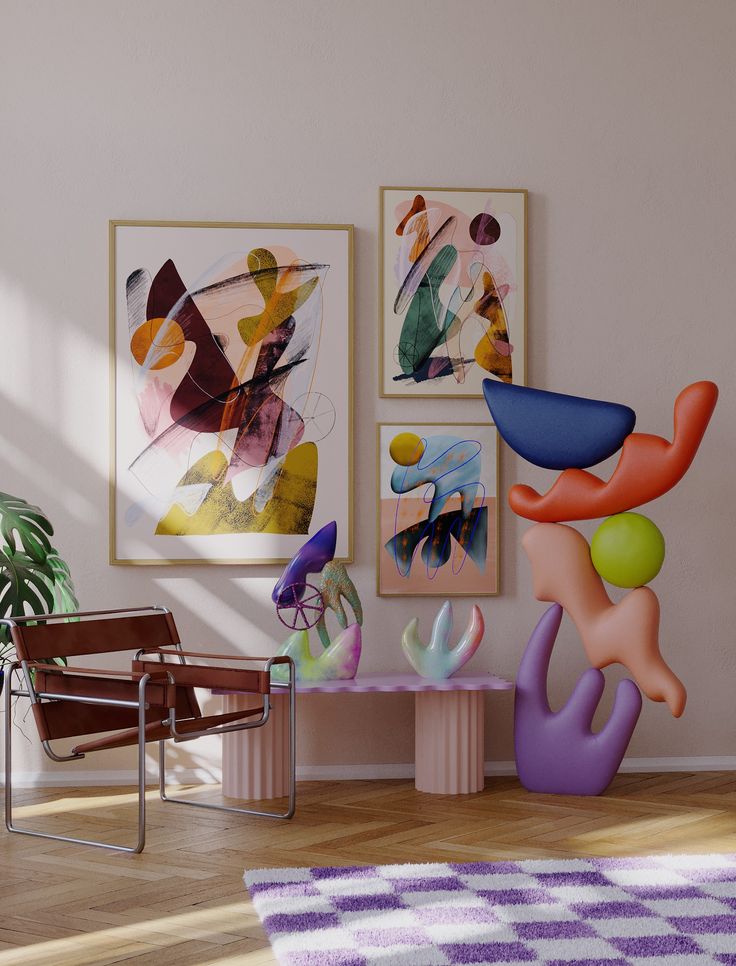-
- Tweet
CartItem(0)ProductProducts Item(0)
No products
Free shipping! Shipping
$0.00Total
Product successfully added to your shopping cart
Quantity
Total
There are 0 items in your cart.There is 1 item in your cart.
Total products (tax excl.)
Total shipping (tax excl.) Free shipping!
Total (tax excl.)
- Email Us contact@dezignlover.com
- WhatsApp : +1(832) 844 1221
The Allure of Pop Art Sculptures in Contemporary Home Decor
On : mardi, avril 8, 2025

Pop art adds vibrancy and energy to any interior space with its vibrant colours and lively patterns, adding life and energy.
Warhol's Marilyn diptych, Lichtenstein's Ben-Day dots and Claes Oldenburg's playful sculptures all capture the playful spirit of Pop Art movement.
Generational connection

Pop art connects present with past through nostalgia and cultural experiences that resonate across time periods, uniting audiences through shared cultural memories. Its vivid hues and geometric patterns create an animated canvas which brings life into any room; no matter your aesthetic preference - from bold statement pieces to more subdued sculptures there will surely be one or more suitable pop art sculptures that speaks directly to you!
Pop art emerged at a time of social disruption, prompting artists to explore familiar icons in new ways and reinvent them for artistic expression. Notable examples from this movement include Andy Warhol and Jasper Johns; their works challenged perceptions about what constitutes art while blurring lines between consumer products and art itself.
Other artists, like Claes Oldenburg, further explored this idea by merging elements of painting and sculpture. His plaster sculptures of strawberries and rotary phones were assembled in his installation called The Store to simulate the layout of a variety store.
Robert Rauschenberg used his paintings to incorporate everyday items, mirroring Marcel Duchamp's famous "urinal" piece. Rauschenberg sought to break down barriers between art and life-involved objects by including elements from real-life into his pieces, thus breaking them down altogether.
Aesthetics

Pop art sculptures add an eye-catching pop of fun to modern living spaces and are an excellent way to add personality. Boasting vibrant hues and iconic references that pop against darker backgrounds, these pieces make an impactful statement piece. Additionally, pop art wall art allows you to decorate any corner in the room with an eye-catching display piece that stands out.
Pop Art first emerged as a response to mass culture during the 1950s. Artists engaged both positively and critically with consumerist society through Pop Art pieces that integrated images from popular media sources into their works - Richard Hamilton's 1956 collage entitled What makes today's homes different is often credited with being at the heart of it all; painting, drawing, sculpture and mixed media techniques combined together create stunning works reminiscent of early 20th-century posters or billboards.
Andy Warhol, Roy Lichtenstein and Claes Oldenburg are three renowned Pop artists. Though their works differ widely, all share an ongoing theme of subverting conventions of fine art. Warhol's Gold Marilyn Monroe painting perfectly captures this style; Lichtenstein used Ben-Day dots to evoke comic book printing techniques.
Oldenburg's sculptures featuring everyday consumer products like typewriters and hamburgers were an examination of how culture had blurred with consumer products such as typewriters and hamburgers, while James Rosenquist's massive collages on contemporary society highlighted its saturation with media.
Social impact

Pop art sculptures offer many advantages for both artistic expression and home decor, including enhanced aesthetic appeal as well as profound social benefits.
Pop Art emerged in the 1950s in response to traditional art's exclusivity and elitism, and artists like Andy Warhol, Roy Lichtenstein, and Claes Oldenburg responded by using everyday images and objects in their work to challenge its status quo. Their works revolutionized art by making it more accessible to a broader audience.
Pop art is easily distinguished by its use of bold colors and images that reflect popular culture, such as consumer products, advertising campaigns, or celebrities; its subjects often reflect this aspect of modern life while simultaneously mocking traditional art's elitism and challenging cultural norms.
"Art is what you can get away with" captures the audacious aesthetic of pop art. Andy Warhol's sculptures epitomize this philosophy; these pieces create emotional responses and generate dialogue, providing a sense of community in your home.
Functionality

Pop art adds vibrancy and energy to any room's decor, offering you the chance to express yourself freely through creative self-expression. These dynamic creations match seamlessly with any color palette or pattern and instantly bring life and excitement into any room - while serving as natural focal points to draw the eye back toward other aspects of design.
Pop art sculptures' inventive use of everyday images and blend of high and low culture offers a charming contrast in your space, injecting an element of humor and irony while celebrating popular culture visually. Mundane objects like vintage advertisements, comic book illustrations and household products become mesmerising visual treats that force us to reconsider everything that surrounds our daily lives.
Pop art sculptors employ repetition and serial imagery to challenge our collective understanding of iconic figures, like Marilyn Monroe. Warhol's numerous portraits of her call to mind how media saturation shapes our understanding of them while Roy Lichtenstein's repetition of Ben-Day dots highlights how visual repetition shapes perceptions.
Pop art has long been considered more than an artistic trend - it is an influential cultural movement which transformed attitudes and challenged norms. Pop's vibrant palette, incorporation of consumer culture, embrace of repetition, irony's keen wit and playful techniques all contribute to its captivating allure.







